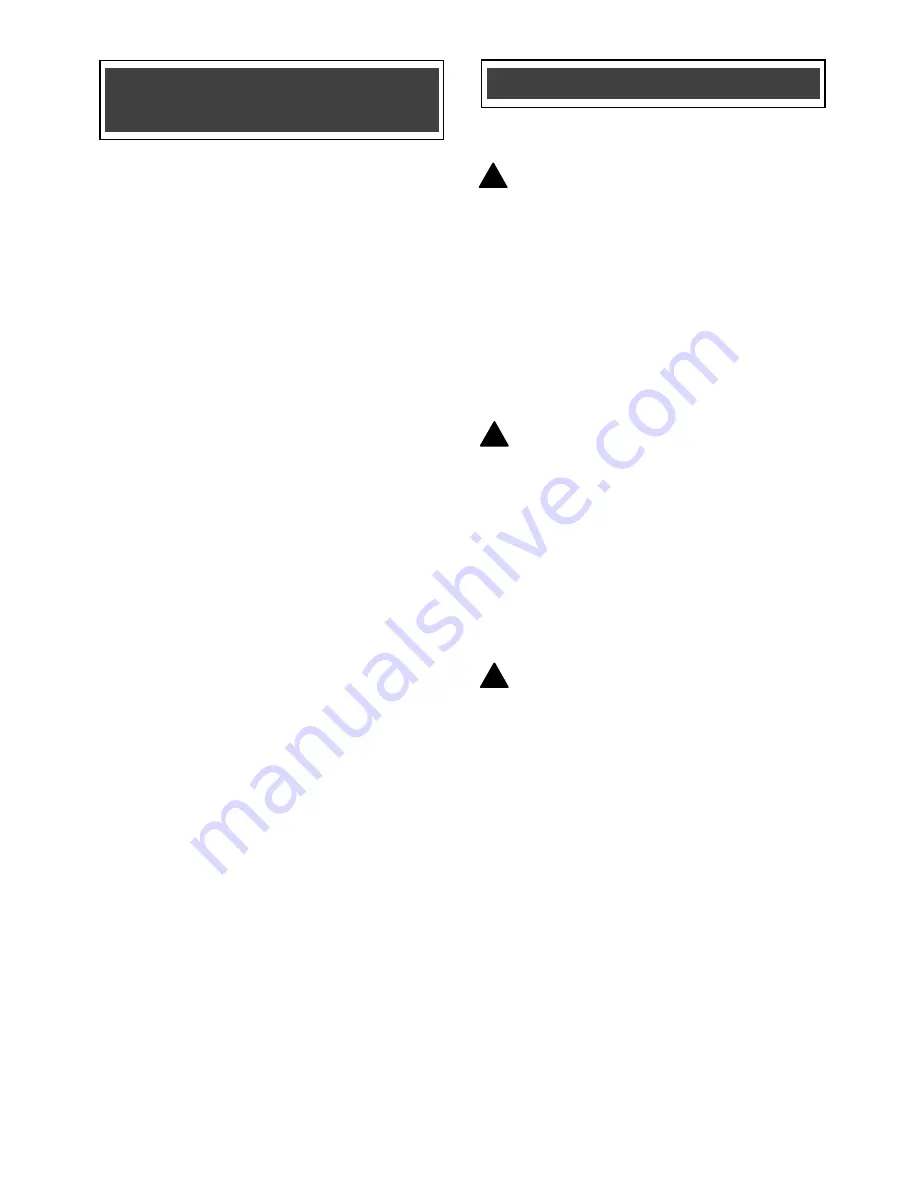
17
DRIVING AND REMOVING SCREWS
When driving or removing screws, always
use the largest screwdriver bit that will
properly fit into the head of the screw to
prevent damage to the screwdriver bit and
the screw head. When starting the tool,
make sure you are pressing the bit straight
and firmly into the screw head. To avoid
over driving screws or damaging the screw
head or the screwdriver bit, start the tool at
a slow speed and DO NOT allow it to
continue to run in the impact mode for
more than a few seconds.
DRILLING
Drill bits with a 1/4" hex shank can be used
in the 1/2" square to 1/4" hex adapter.
Whenever possible, use a center punch to
mark the location of the hole to be drilled.
When starting the tool, make sure the drill
bit is lightly touching the workpiece where
the hole is to be drilled. This will ensure
the drill starts in the correct location
without “wandering” as you start drilling.
GENERAL
WARNING:
When servicing, use
only identical replacement parts. Use of
any other part may create a hazard or
cause product damage.
DO NOT use solvents when cleaning
plastic parts. Plastics are susceptible to
damage from various types of commercial
solvents and may be damaged by their
use. Use a clean cloth to remove dirt, dust,
oil, grease etc.
WARNING:
Do not at any time
allow brake fluids, gasoline, petroleum-
based products, penetrating oils, etc. to
come into contact with plastic parts.
They contain chemicals that can
damage, weaken or destroy plastic.
DO NOT abuse power tools. Abusive
practices can damage the tool as well as
the workpiece.
WARNING:
DO NOT attempt to
modify tools or create accessories. Any
such alteration or modification is
misuse and could result in a hazardous
condition leading to possible serious
injury. It will also void the warranty.
LUBRICATION
All of the bearings in this tool are
lubricated with a sufficient amount of high-
grade lubricant for the life of the unit under
normal conditions. Therefore, no further
lubrication is required.
!
!
!
MAINTENANCE
ASSEMBLY AND
OPERATION





































